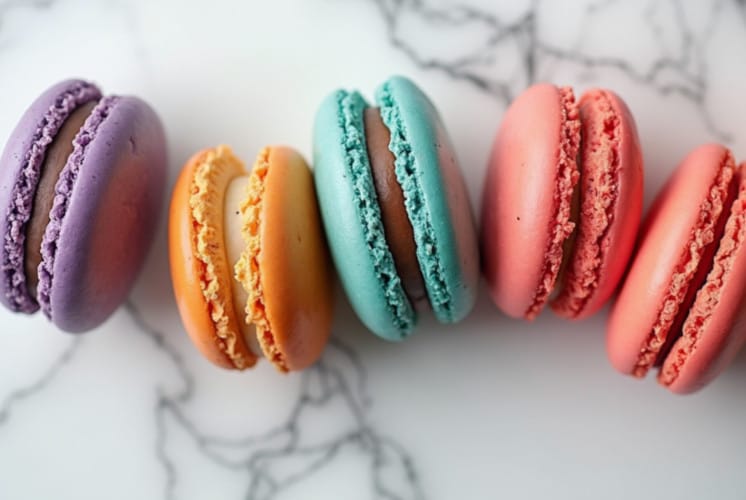When it comes to macarons, we know that these delicate, colorful treats are beloved by many. But did you know that there are two main ways to make them? French vs Italian Macaron? While both versions look similar, their preparation methods and textures can be quite different.
In today’s post, we’ll explore the key differences between the French and Italian macaron methods. I also also mention why you might choose one over the other depending on your baking goals.
Let’s get into the sweet details!
What is a French Macaron?

French macarons are probably the most well-known style of macaron. The French method is comparatively simple. It relies on whipping egg whites to stiff peaks, then gently folding in almond flour and powdered sugar. The result is a light, crisp shell with a chewy center that melts in your mouth.
The French technique requires a bit of finesse, especially when it comes to the meringue. The egg whites need to be whipped just right—too soft, and your macarons won’t hold their shape; too stiff, and they can crack.
Once piped, the macarons are left to rest before baking, which helps them develop their signature “foot” at the base. This method is all about precision, and with a little practice, it leads to delicious, picture-perfect macarons.
What is an Italian Macaron?

Italian macarons, on the other hand, use a slightly more complicated method. This version involves cooking sugar and water to make a syrup, then slowly pouring it into whipped egg whites while they’re being beaten. This technique creates a much more stable meringue, which makes the Italian method a bit easier for beginners to handle.
The result of the Italian method is a slightly firmer macaron shell, often with a smoother texture. The added sugar syrup creates a more stable batter, so it’s less likely to collapse during baking, which can sometimes happen with French macarons.
This method can also yield a more uniform look, making it a great option for those who want perfectly consistent results.
Key differences between French and Italian macarons
The main difference between French macarons and Italian macarons is in the meringue process. French macarons rely on raw egg whites that are beaten until stiff peaks form, while Italian macarons involve making a sugar syrup to create a more stable meringue. This difference affects the texture and overall consistency of the macaron.
In terms of texture, French macarons tend to have a slightly chewier center with a more delicate shell, while Italian macarons are often a bit firmer and have a smoother finish. The Italian method’s stable meringue also makes it easier to get a consistent result, which can be helpful for those just starting out.
When to use French macarons
French macarons are perfect for experienced bakers or those who enjoy the challenge of achieving the delicate balance needed to make the perfect macaron. Their light and chewy texture makes them a great choice for pairing with creamy fillings like ganache, buttercream, or fruit jams.
If you’re aiming for a traditional, classic macaron, the French method is the way to go.They’re also great if you want to experiment with different flavors and colors, as the French method tends to allow a bit more flexibility with mixing and matching ingredients.
French macarons are often the go-to choice if you’re looking for a more authentic, refined macaron.
When to Use Italian Macarons
Italian macarons are a fantastic choice for beginners or anyone looking for a more foolproof method. The stable meringue ensures that your macarons are less likely to crack or collapse, even if you’re not quite an expert yet.
They’re also great if you’re making macarons in bulk, as the Italian method yields a consistent and stable batter.
The slightly firmer texture of Italian macarons makes them perfect for fillings that are more solid, such as chocolate ganache, cream cheese fillings, or fruit curds. If you’re looking for macarons that hold up well over time or have a uniform, polished look, Italian macarons may be your best bet.
So, whether you prefer the delicate, chewy texture of French macarons or the smooth, stable consistency of Italian macarons, both styles offer something unique. The choice ultimately depends on your skill level, the type of macaron you’re making, and the texture you’re aiming for.
Which one do you prefer?
Which macaron method (french vs Italian macaron) do you prefer? Have you tried both?
Ready to try making macarons at home? Which method are you going to try first—French or Italian? Drop a comment and let me know!



